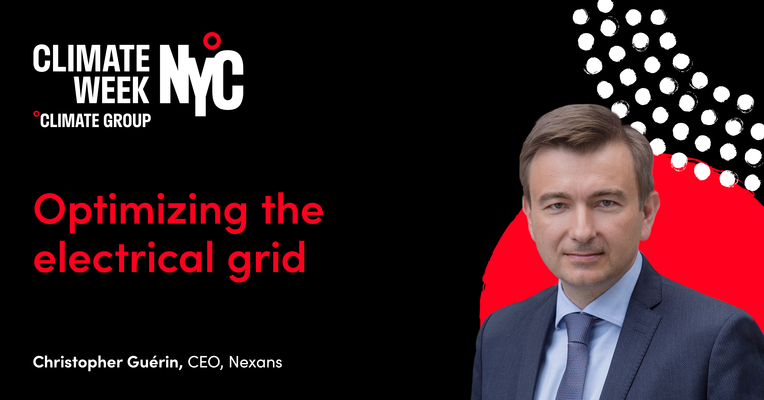When the Electrification emergency meets the climate emergency for a sustainable world
We are facing an electrical revolution that has never been seen before.
The current reality of our global electrification emergency is more extensive than in previous years. Not only is demand for supply significantly higher but we are also facing the need for an increased scope. For the first time in the history of world electrification, we will need much more for everyone, everywhere, at the same time.
Our new geopolitical risks are affecting how some companies can conduct their business, but it is our responsibility to ensure they do now impact the global shift towards electrification. The world will need massive electrical flows in the coming decades – we anticipate an increase of 40% by 2040.
Infrastructure and grids: the key turning points
In 2022, we have seen an increase in power outages around the world due to the rising temperatures and energy demand outpacing supply.
Climate change impacts more than extreme heat. It fuels droughts, wildfires and hurricanes, which adds undue stress to America's existing power grids. Over 90% of outages are a direct result of weather-related events, and the intensity of rising temperatures threaten the grid's ability to effectively energize our cities.
The average age of the power grid in Europe is around 45 to 50 years old and 35 to 40 in North America. Technology has progressed significantly over the past 50 years and has pushed every industry forward, yet grids remain stuck in the past. To make the changes needed would be like asking the telecom industry to transition from 2G to 5G in less than 10 years.
The electrical grid is the backbone of any country's economy. When infrastructure fails, it affects more than just the ability to turn on the lights. With an outage, we lose access to telecommunications, heating systems, and experience limited access to water.
Due to the aging infrastructure and the intensity of climate risks, we need to invest in modernizing and fortifying its electrical infrastructure.
Building a sustainable electrification of the world.
We are currently on track to meet our goals of achieving carbon neutrality by 2030, having invested over €500 million in the offshore wind sector in Europe and the United States. Nexans has created the E3 framework for performance management, which consists of mixing environment, engagement and economics. Within this new management model, sustainability becomes incorporated as something intrinsic in the organization's decision-making, making climate impact a daily business consideration.
Electrification is in our DNA. It is at the heart of our existence. Electrifying the future means becoming a "pure player," a global leader across our entire value chain — electricity generation, transmission, distribution and use.
With 50% of the world's electricity coming from wind and solar by 2050, we are committed to being part of the world's more significant sustainability initiatives and using a digital-first approach to drive this transformation.
Live circular
Producing products with an ever-increasing recycling rate is also at the heart of our promise, our investments and our innovation. The future relies on our ability to move from a traditional economy to a circular economy that favors short transportation circuits with recycling at its core. Companies should not only be straightforward with their production processes, but also with their suppliers and customers.
Sustainable electrification around the world, using decarbonized and renewable energy, will only be possible if we extend the effort to insulation components to copper, the main raw material for electricity. Which is why Nexans has maintained our 3 recycling copper plants in France, Canada and Chile. Companies can no longer send their copper to China to save a few dollars because the carbon emissions from transportation alone is much worse than any potential savings.
In the future, we will longer supply recycled copper to companies who choose to send their copper to China. Recycling should be a holistic activity. We should consider the upstream, the production process and the downstream. Our waste of today are the markets of tomorrow.
Nexans in the United States
At present, we are the only offshore wind manufacturing facility on U.S. soil for offshore wind power. Nexans is producing cables and solutions for one of the first offshore wind farms in the United States in South Fork, New York, which will address East Hampton's energy needs and will produce enough clean energy to power 70,000 homes.
Nexans is also the preferred supplier of Ørsted for U.S. offshore wind farms and the preferred supplier of Equinor for Empire Wind to electrify the future of New York State by connecting the offshore projects to the onshore grid. These turnkey projects cover the full design and manufacturing and the laying and monitoring of over 186 miles (300 km) connections that will deliver renewable energy to over one million homes.
The networks we are building in the United States would not be possible without the collective effort. Continued development and action is a shared fight, and we must work together to achieve our goals of carbon neutrality and a cleaner tomorrow.
As we continue to develop a sustainable electrification of the United States, we look forward to hosting our third annual Nexans' Climate Day in New York City so that we can work towards electrifying the future together.
